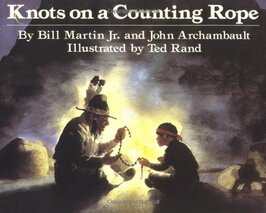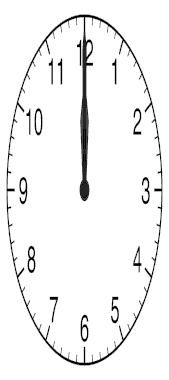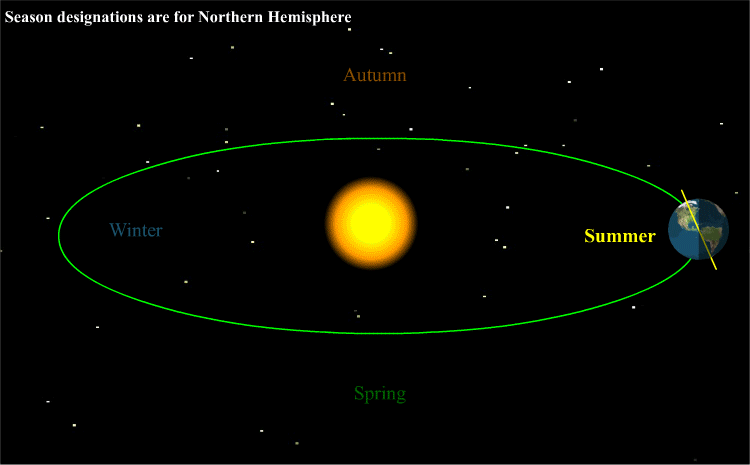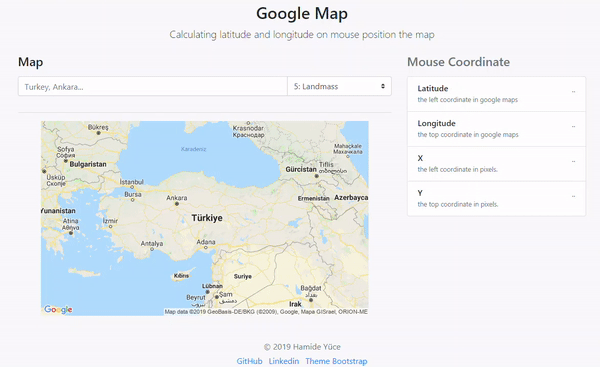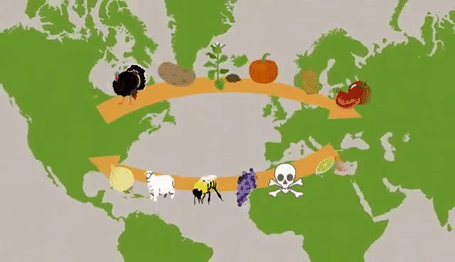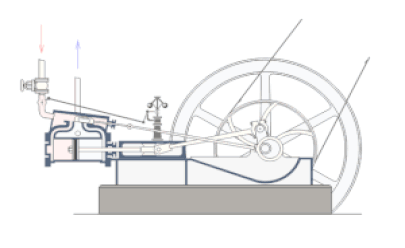History of STEM
(A History of Scientific Thought & Discovery)
Ohio Department of Education
K-6 Science & History Standards
Comparison
ODE StandardsOhio's Learning Standards and Model Curriculum for ScienceOhio's Learning Standards and Model Curriculum for Science (adopted 2018-2019)
Next Generation Science Standards (NGSS)The Next Generation Science Standards (NGSS) were released by Achieve on April 9, 2013. The structure of Ohio’s Learning Standards for Science is significantly different from NGSS, but the research that provided the framework from which each were developed is the same. Both sets of standards address similar science content, skills and ways of thinking. Many of the related resources and strategies designed for use by NGSS can be useful when implementing the Ohio standards. Teachers are encouraged to use NGSS to support classroom instruction.
Additional Resources for Understanding Ohio’s Science Learning Standards and Model Curriculum Ohio's Learning Standards for Social Studies (adopted 2010)The State Board of Education adopted Ohio’s Learning Standards for Social Studies as a part of Ohio’s learning system. The Ohio Department of Education’s state assessments are based on these standards until the 2020-2021 school year.
Ohio's Learning Standards for Social Studies (revised 2018) |
KMN's OETC 20
| ||||||
| oetc20_science_history_kmn_02122020_1_.pdf | |
| File Size: | 5112 kb |
| File Type: | |
Grade 1
ScienceOBSERVATIONS OF THE ENVIRONMENT
This theme focuses on helping students develop the skills for systematic discovery to understand the science of the natural world around them in greater depth by using scientific inquiry. Strand Connections: Energy is observed through movement, heating, cooling and the needs of living organisms. |
Social StudiesFamilies Now and Long Ago, Near and Far The first-grade year builds on the concepts developed in kindergarten by focusing on the individual as a member of a family. Students begin to understand how families lived long ago and how they live in other cultures. They develop concepts about how the world is organized spatially through beginning map skills. They build the foundation for understanding principles of government and their roles as citizens.
|
Needs
(Health & Family)
Family Timelines
Artifacts (Family):
|
|
The student can use photographs, letters, artifacts and books to communicate information and draw conclusions about the past.
|
Needs
Psychological
|
Time
Routines:
BroadcastExchange - How important are routines for children? |
Cartoon for Kids‼️ Needs and Wants. Science for Children |
Safety
|
Authorities
Maps: home, school, community (parks, police station, fire station, library, etc.) home - fire escape school - fire escape local -parks local - police station local - fire station Me on the map by Joan Sweeney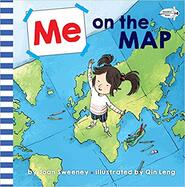
Where are you? Where is your room? Where is your home? Where is your town?
This playful introduction to maps shows children how easy it is to find where they live and how they fit in to the larger world. Me on the map by Joan Sweeney - Read by Lisa Kahle |
Samuel McKay Everett Foundation - ABC's of SafetyNFPA Kids - Making a Home Fire Escape PlanOhio Digital Network
ODN
https://ohiodigitalnetwork.org/maps/ Topic: Maps Time Period:1832-1986 Keyword(s): Maps, Transportation, Topography, Map symbols, Ohio, United States Grade level(s):1-3 Learning standard(s): Ohio Social Studies: Grade 1, Content Standards 2, 4 Ohio Social Studies: Grade 2, Content Standards 2, 5 Ohio Social Studies: Grade 3, Content Standards 2, 3 INCLUDES LINKS TO: Teaching Guide Additional Resources |
Love & Belonging
|
Family tree
Friendship trees Me and My Family Tree by Joan SweeneyFollowing the successful model of Me on the Map, Sweeney demystifies an abstract concept by presenting it from a child's point of view. In Me and My Family Tree, a young girl uses simple language, her own childlike drawings, and diagrams to explain how the members of her family are related to each other and to her.
|
The Family Book - read by Sherry |
Esteem & Basic Needs
|
Basic Needs:
SciShow Kids - Why Do We Get Mad?SciShow Kids - Why Do We Cry When We're Sad? |
5 Basic Needs we Need from the Environment | Nursery Rhymes and Kids Songs |33 POSITIVE AFFIRMATIONS FOR KIDS SELF ESTEEM - (WATCH AT LEAST ONCE A DAY!) | SandZ Affirmations |
Grade 2
ScienceOBSERVATIONS OF THE ENVIRONMENT
This theme focuses on helping students develop the skills for systematic discovery to understand the science of the natural world around them in greater depth by using scientific inquiry. Strand Connections: Living and nonliving things may move. A moving object has energy. Air moving is wind and wind can make a windmill turn. Changes in energy and movement can cause change to organisms and the environments in which they live. |
Social StudiesPeople Working Together Work serves as an organizing theme for the second grade. Students learn about jobs today and long ago. They use biographies, primary sources and artifacts as clues to the past. They deepen their knowledge of diverse cultures and their roles as citizens.
|
Jobs
(Past, Present, Future)
Time & Timelines
|
Ohio Department of Education Model Curriculum Instructional Strategies and Resources
Dream English Kids - Wake Up! Daily Routines Song for Kids |
Schedule Templates: |
Biographies
Free School - Dr. Martin Luther King, Jr: Biography for Children, American History for Kids - FreeSchool |
More Free School Biographies for Children:
|
Jobs
Amazing Site: Exploring - Science Career ExploringScience Career Exploring is a hands-on program open to young men and women from the 6th grade to 20 years old with an interest in learning more about careers in the fields of Science.
Amazing Site: The Owl Teacher - 20 Science Career Projects and Activities that EngagesSometimes a topic such as science careers can be a bit dry. And, often times you aren’t exactly sure how to “spruce it up” so students are engaged. Today, I have 20 science career project and activity ideas...
Jobs and Occupations for Kids | What Does He/She Do? | Kindergarten, EFL and ESL | Fun Kids English |
Fun Kids English - Jobs Song for Kids | What Do You Do? | Occupations | Kindergarten, Preschool, ESLKids vocabulary - Jobs - Let's learn about jobs - Learn English for kids - English educational video |
Earth & Space
- Weather and Jobs:
- Builder, Farmer, Fisherman, Ice cream shop owner ,Postal worker, Taxi driver..
Grade 3
ScienceINTERCONNECTIONS WITHIN SYSTEMS
This theme focuses on helping students explore the components of various systems and then investigate dynamic and sustainable relationships within systems using scientific inquiry. Strand Connections: Matter is what makes up all living and nonliving substances on Earth. Matter has specific properties and exists in different states. Earth’s resources are made of matter. Matter can be used by living things for materials and energy. There are many different forms of energy. Each living component of an ecosystem is composed of matter and uses energy. |
Social StudiesCommunities: Past and Present, Near and Far The local community serves as the focal point for third grade as students begin to understand how their communities have changed over time and to make comparisons with communities in other places. The study of local history comes alive through the use of artifacts and documents. They also learn how communities are governed and how the local economy is organized.
|
Communities
(Local, State, National & Global)
Timelines
|
Ohio Department of Education Model Curriculum Instructional Strategies and Resources
Place-Based Learning: Connecting Kids to Their Community |
Your Community | Types of Community | Kids AcademyWhat Makes A Good Community |
Maps
|
Ohio
How to Find Thousands of Oceanic Fossils in... Ohio?Where Do Mountains Come From? | Geology for Kids |
SciShow Kids - Know Your GlobeOhio Rocks: Geology |
Humans & the Environment
|
Positive vs. Negatives
How long will human impacts last? - David Biello |
Human, Capital & Natural Resources for Kids | Types of Resources | Kids AcademyNatural Resources for Kids | Teach your kids and students about Earths Natural ResourcesPast To Future - History of Native Americans for Kids - Timelines - Animation |
Artifacts (Primary & Secondary Sources)
|
Ohio Department of Education Model Curriculum Instructional Strategies and Resources
|
Scavenger Hunt Ideas:
Pintrest: |
Grade 4
ScienceINTERCONNECTIONS WITHIN SYSTEMS
This theme focuses on helping students explore the components of various systems and then investigate dynamic and sustainable relationships within systems using scientific inquiry. Strand Connections: Heat and electrical energy are forms of energy that can be transferred from one location to another. Matter has properties that allow the transfer of heat and electrical energy. Heating and cooling affect the weathering of Earth’s surface and Earth’s past environments. The processes that shape Earth’s surface and the fossil evidence found can help decode Earth’s history |
Social StudiesOhio in the United States The fourth-grade year focuses on the early development of Ohio and the United States. Students learn about the history, geography, government and economy of their state and nation. Foundations of U.S. history are laid as students study prehistoric Ohio cultures, early American life, the U.S. Constitution, and the development and growth of Ohio and the United States. Students begin to understand how ideas and events from the past have shaped Ohio and the United States today.
|
Social Studies
(Ohio in the United States)
Timelines
Ohio - 200 yearsOhio represents us all. In its dramatic history and astonishing diversity, Ohio closely replicates the vast, complicated, and turbulent place called America. The film offers a snapshot of the state's colorful history along with insights into the Ohio of today: a mix of odd, funny moments and life-changing events.
The Science Show - What is the Meaning of Ohio's Mysterious Serpent Mound? | Secrets of the UndergroundSecrets of the Underground | Tuesdays at 10/9c The Great Serpent Mound is a 1,348-foot-long prehistoric effigy mound in Ohio. Scientists are unsure what its purpose was.
Full Episodes Streaming FREE on Science Channel GO: https://www.sciencechannelgo.com/secr... A Burial Mound Mystery | NewsDepth: Know OhioOhio is home to some of the greatest examples of burial mounds, but mystery still remains about who built them and why. Tell us your theories in the comment section! Learn more about Ohio: https://www.youtube.com/playlist?list...
Ohio's Early Pioneers | NewsDepth: Know OhioOhio's early European settlers took on a big challenge in moving to the untamed wilderness of Ohio. Mary shares their story!
Learn more about Ohio: https://www.youtube.com/playlist?list... The Wright Brothers | NewsDepth: Know OhioThe inventors of modern aviation were from where else but Ohio! Darrielle shares about the ups and downs of their invention process.
Learn more about Ohio: https://www.youtube.com/playlist?list... |
TED Ed - What’s so great about the Great Lakes? - Cheri Dobbs and Jennifer GabrysView full lesson: http://ed.ted.com/lessons/what-s-so-g...
The North American Great Lakes — Huron, Ontario, Michigan, Erie, and Superior — are so big that they border 8 states and contain 23 quadrillion liters of water. They span forest, grassland, and wetland habitats, supporting a region that’s home to 3,500 species. But how did such a vast and unique geological feature come to be? Cheri Dobbs and Jennifer Gabrys takes us all the way back to the Ice Age to find out. Lesson by Cheri Dobbs and Jennifer Gabrys, animation by TED-Ed. Ohio DNR - Ohio's Scenic GeologyFor anyone interested in Ohio's natural history, this video offers a brief look at the geologic origins of many scenic wonders that dot the Ohio landscape. From striking rock formations to dynamic lakes and rivers to world-famous fossil beds, our state features a complex geology that inspires a sense of awe and carries a legacy of science and lore.
Ohio Rocks - Geology, Ice Age, Fossils, and Resources (Full)Ohio was much different than it is today. Watch and learn what made it so as we explore Ohio's geology, ice age, and fossils
Western Reserve Historical Society - East vs. West: Mapping Cleveland, The Western Reserve, and the MidwestDrawing on a rich collection of maps at WRHS, this exhibit follows the history of how the area in which we live came to be mapped, divided up, separated into political areas of settlement, and maybe shed some light on how east versus west became so important in Cleveland.
|
Grade 5
ScienceINTERCONNECTIONS WITHIN SYSTEMS
This theme focuses on helping students explore the components of various systems and then investigate dynamic and sustainable relationships within systems using scientific inquiry. Strand Connections: Cycles on Earth, such as those occurring in ecosystems, in the solar system, and in the movement of light and sound result in describable patterns. Speed is a measurement of movement. Change in speed is related to force and mass. The transfer of energy drives changes in systems, including ecosystems and physical systems. |
Social StudiesRegions and People of the Western Hemisphere In grade five, students study the Western Hemisphere (North and South America), its geographic features, early history, cultural development and economic change. Students learn about the early inhabitants of the Americas and the impact of European exploration and colonization. The geographic focus includes the study of contemporary regional characteristics, the movement of people, products and ideas, and cultural diversity. Students develop their understanding of the relationship between markets and available resources.
|
Farming & Food
(Western Hemisphere)
Timeline
|
Ohio Department of Education Model Curriculum Instructional Strategies and Resources
|
Red Cat Reading - How to Make a Map | Geography for KidsLeapFrog - What are Maps? - Learn & Grow Kids Geography LessonSciShow Kids - Know Your Globe |
Earth & Space
Life
Ecosystems (sun water minerals)
Energy
Plants
Energy
Plants
Exploration
Latitude & Longitude
|
Enter coordinates to find a place
|
Kids Academy - Regions of the USA | Geography for Kids |
SciShow Kids - Where Does Chocolate Come From?EdYouToo - Olmec and Maya CivilizationsEdYouToo - Aztecs (Watch and Read version) TURN ON CC |
SciShow Kids - What Is Pumpkin Spice?EdYouToo - The Aztecs for KidsEdYouToo - The Incas |
The Colombian Exchange
- old world vs. new world
Buffalo (Bison)
- Bison's role in the Plains (other animals introduced into the New World)
Meet the American Bison! |
The Columbian Exchange - description for kids |
Grade 6
ScienceORDER AND ORGANIZATION
This theme focuses on helping students use scientific inquiry to discover patterns, trends, structures and relationships that may be inferred from simple principles.These principles are related to the properties or interactions within and between systems. Strand Connections: All matter is made of small particles called atoms. The properties of matter are based on the order and organization of atoms and molecules. Cells, minerals, rocks and soil are all examples of matter. |
Social StudiesRegions and People of the Eastern Hemisphere In grade six, students study the Eastern Hemisphere (Africa, Asia, Australia and Europe), its geographic features, early history, cultural development and economic change. Students learn about the development of river civilizations in Africa and Asia, including their governments, cultures and economic systems. The geographic focus includes the study of contemporary regional characteristics, the movement of people, products and ideas, and cultural diversity. Students develop their understanding of the role of consumers and the interaction of markets, resources and competition.
|
Goods & Resources
(Eastern Hemisphere)
Timeline
Ohio Department of Education Model Curriculum Instructional Strategies and Resources
- Sixth grade is building on skills learned in grade five, including the conventions of B.C. (Before Christ), A.D. (Anno Domini), B.C.E. (Before the Common Era), and C.E. (Common Era) to place dates in chronological order.
- At this level students use multiple-tier timelines consisting of two or more rows of events, with each row representing a different topic or perspective related to a specific time period.
- Multiple-tier timelines can be used to help students analyze cause and effect relationships or patterns and themes among events in a specific period of time. These analytical skills build upon earlier skills related to chronological thinking and temporal order.
- Create a multiple-tier timeline on the classroom/hallway floor or wall using painter’s tape. Each tier can represent a different civilization/cultural group. As historic study progresses, the class can add events to the timeline and discuss relationships.
- Create a timeline that spans 2000 B.C.E. to 2010 C.E. along a hallway wall or around the classroom. Select a designated length to represent 100 years (possibly 1 foot = 100 years) and use tape (masking tape or blue painter’s tape) to create the timeline and mark the centuries. Have students select notable historic events, including some ancient events (e.g., building of Giza pyramids) and events in American and Ohio history students might be familiar with (e.g., signing of the Declaration of Independence, Ohio statehood). Have students find photographs or illustrations representing these events and attach them to the timeline. Encourage students to reflect on when most of the events they are familiar with happened and how long ago the river civilizations really were.
- When introducing this content, discuss why some historians might use C.E. and B.C.E. instead of B.C. and A.D. What are the origins of these four terms? Which ones are used most often and in which situations?
- As a kinesthetic learning activity, have students create a human timeline. Distribute event cards with dates in the Common Era and before the Common Era, and instruct students to organize themselves chronologically.
- Thinkport Tool: Creating a Timeline: http://timeline.thinkport.org - This interactive tool allows users to construct a timeline and add events, descriptions and images to bring their timelines to life.
- Connections: Connect to Mathematics Common Core State Standards by emphasizing the similarities between timelines and number lines, including the use of positive and negative numbers.
Earth/Space Science
Dr. Nagler's Laboratory: Longitude and Latitude |
Rocks, Soil and Minerals | Periwinkle |
Physical Science
|
Matter & Motion
The deadly irony of gunpowder - Eric RosadoView full lesson: http://ed.ted.com/lessons/the-deadly-... In the mid-ninth century, Chinese chemists, hard at work on an immortality potion, instead invented gunpowder. They soon found that this highly inflammable powder was far from an elixir of life -- they put it to use in bombs against Mongol invaders, and the rest was history. Eric Rosado details how gunpowder has caused devastation around the world, despite the incandescent beauty of fireworks. Lesson by Eric Rosado, animation by Zedem Media.
|
How Does a Steam Engines Work? | Earth Lab |
Life Science
|
cellular to multi-cellular
Food cells |
Unicellular vs Multicellular | Cells | Biology | FuseSchoolWhy Are You Multicellular? |
Silk Road
The Silk Road: Connecting the ancient world through trade - Shannon Harris CasteloView full lesson: http://ed.ted.com/lessons/the-silk-ro... With modern technology, a global exchange of goods and ideas can happen at the click of a button. But what about 2,000 years ago? Shannon Harris Castelo unfolds the history of the 5,000-mile Silk Road, a network of multiple routes that used the common language of commerce to connect the world's major settlements, thread by thread. Lesson by Shannon Harris Castelo, animation by Steff Lee.
Latitude & Longitude
Religions Middle East (Mesopotamia, Egypt) India (Buddhism to Hinduism) China (Physical environment Great Wall/Canal) What Is The History of Hinduism?Hinduism & BuddhismThe five major world religions - John BellaimeyExplore the intertwined histories and cultures of the major religions: Hinduism, Judaism, Buddhism, Christianity and Islam. -- It's perfectly human to grapple with questions, like 'Where do we come from?' and 'How do I live a life of meaning?' These existential questions are central to the five major world religions -- and that's not all that connects these faiths. John Bellaimey explains the intertwined histories and cultures of Hinduism, Judaism, Buddhism, Christianity and Islam. Lesson by John Bellaimey, animation by TED-Ed.
|
Mesopotamia Ft. Gilgamesh [simplified English version]Ancient Egypt for KidsWhat makes the Great Wall of China so extraordinary - Megan Campisi and Pen-Pen ChenView full lesson: http://ed.ted.com/lessons/what-makes-...
The Great Wall of China is a 13,000-mile dragon of earth and stone that winds its way through the countryside of China. As it turns out, the wall’s history is almost as long and serpentine as its structure. Megan Campisi and Pen-Pen Chen detail the building and subsequent decay of this massive, impressive wall. Lesson by Megan Campisi and Pen-Pen Chen, animation by Steff Lee. |
